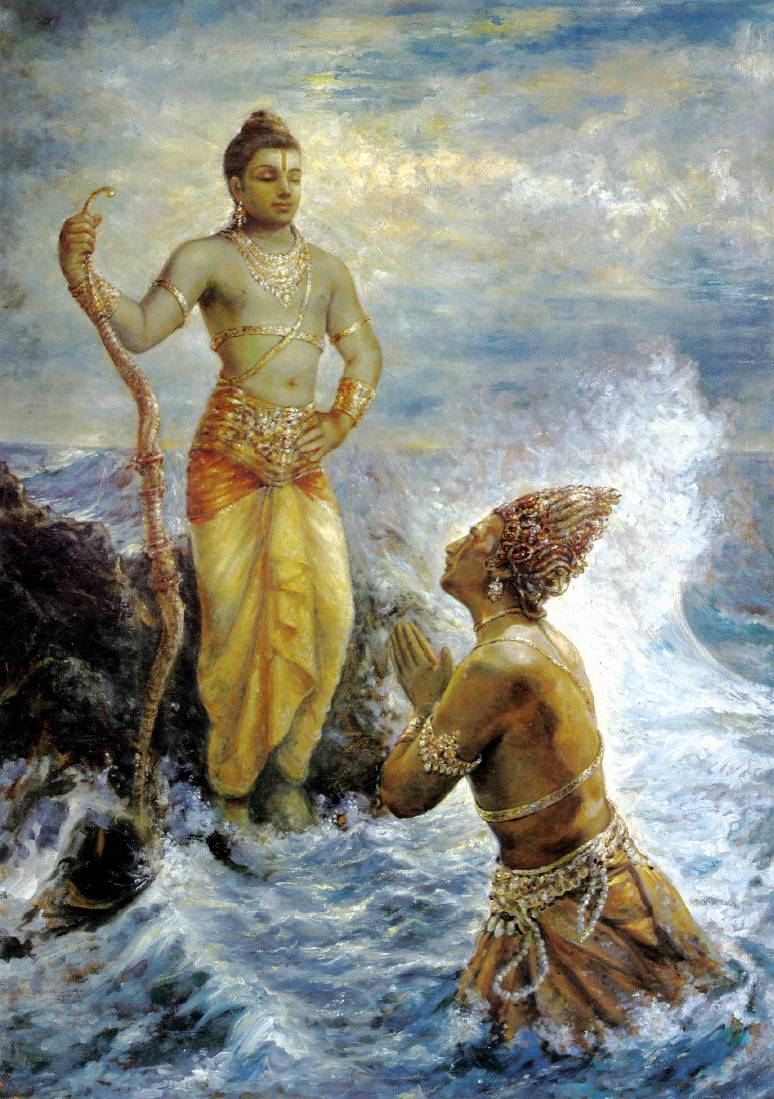

We are told that Vālmı̄ki, while tranquilly engaged in his ritual bath at the banks of a river one morning, was admiring two beautiful krauñca birds engaged in the act of mating. Vālmı̄ki is lauded by the Hindu religious tradition as its ādi kavi (first poet). The most ancient and influential rendition of the exploits of Rāma is ascribed to the primordial poet-sage figure Vālmı̄ki, and serves as the culmination of a long bardic tradition resulting from an oral composition originating over two millennia ago. As Robert Goldman notes, “few works of literature produced at any time have been as popular and influential as the great and ancient Sanskrit epic poem, the Vālmı̄ki Rāmāyaṇa entertained, moved, enchanted, and uplifted untold millions of people in India and much of Southeast Asia” ( 1984: 4). 1 Rāma is regarded within the Hindu tradition as the exemplar of social and moral conduct, serving to define and perpetuate South Asian social values. The themes thereof, however, have remained quintessential aspects of Hindu thought and culture over the centuries, inspiring art, dance, narrative, and moral instruction, not only in India but across South and Southeast Asia to this day. The story has undergone innumerable interpolations, redactions, vernacular translations, and local retellings throughout its vast and dynamic receptive history. The Rāmāyaṇa portrays the legendary exploits of the virtuous warrior-prince Rāma. THE MONUMENTAL SANSKRIT epic Rāmāyaṇa functions as an ancient repository of social and moral values which are very much alive today in the Hindu world. By comparing representations of violence in the Vālmı̄ki Rāmāyaṇa to modern Western legitimizations of force, this study advances the inclusion of Hindu thought into the global discourse on the ethics of war and peace.

This article identifies both similarities and differences between the epic's criteria for warfare and those of the Just War framework. This study also shows the extent to which the criteria and the larger discourse in the Vālmı̄ki Rāmāyaṇa are distinctly couched within Indic ethical parameters, drawing particularly upon the moral precept of ahiṃsā (nonviolence). This analysis demonstrates the presence in the ancient work of all seven modern Just War criteria-namely (1) Just Cause, (2) Right Intent, (3) Net Benefit, (4) Legitimate Authority, (5) Last Resort, (6) Proportionality of Means, and (7) Right Conduct. Are those themes comparable to the discourse on violence of ancient India? This article examines the influential Sanskrit epic Vālmı̄ki Rāmāyaṇa in order to broach these questions. The characters Rama, Sita, Lakshman, Bharata, Hanuman and Ravana are all fundamental to the cultural consciousness of India, Nepal, and many South-East Asian countries such as Thailand and Indonesia.When is armed force considered justified in Hinduism? How do Hindu legitimizations of warfare compare with those of other religions? The Just War framework, which evolved from Roman and early Christian thought, stipulates distinct criteria for sanctioning the use of force. Like the Mahābhārata, the Ramayana is not just a story: it presents the teachings of ancient Hindu sages in narrative allegory, interspersing philosophical and devotional elements. The Ramayana was an important influence on later Sanskrit poetry and Indian life and culture. Verses in the Ramayana are written in a 32-syllable meter called anustubh. Thematically, the Ramayana explores human values and the concept of dharma. The Ramayana consists of 24,000 verses in seven books and 500 cantos, and tells the story of Rama, whose wife Sita is abducted by the king of Sri Lanka, Ravan. The name Ramayana is a tatpurusha compound of Rāma and ayana, translating to "Rama's Journey". It depicts the duties of relationships, portraying ideal characters like the ideal father, ideal servant, the ideal brother, the ideal wife and the ideal king. The Ramayana is one of the two great epics of India, the other being the Mahabharata.

It is ascribed to the Hindu sage Valmiki and forms an important part of the Hindu literature, considered to be itihāasa. The Ramayana is one of the great epics of India. Freebase (5.00 / 4 votes) Rate this definition:


 0 kommentar(er)
0 kommentar(er)
